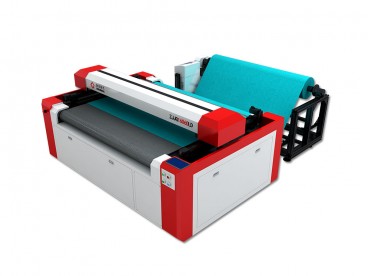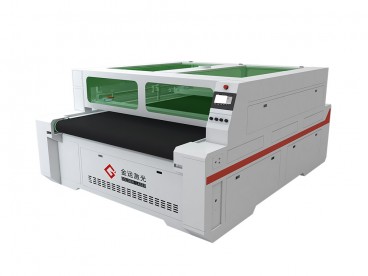
- English
- French
- German
- Portuguese
- Spanish
- Russian
- Japanese
- Korean
- Arabic
- Irish
- Greek
- Turkish
- Italian
- Danish
- Romanian
- Indonesian
- Czech
- Afrikaans
- Swedish
- Polish
- Basque
- Catalan
- Esperanto
- Hindi
- Lao
- Albanian
- Amharic
- Armenian
- Azerbaijani
- Belarusian
- Bengali
- Bosnian
- Bulgarian
- Cebuano
- Chichewa
- Corsican
- Croatian
- Dutch
- Estonian
- Filipino
- Finnish
- Frisian
- Galician
- Georgian
- Gujarati
- Haitian
- Hausa
- Hawaiian
- Hebrew
- Hmong
- Hungarian
- Icelandic
- Igbo
- Javanese
- Kannada
- Kazakh
- Khmer
- Kurdish
- Kyrgyz
- Latin
- Latvian
- Lithuanian
- Luxembou..
- Macedonian
- Malagasy
- Malay
- Malayalam
- Maltese
- Maori
- Marathi
- Mongolian
- Burmese
- Nepali
- Norwegian
- Pashto
- Persian
- Punjabi
- Serbian
- Sesotho
- Sinhala
- Slovak
- Slovenian
- Somali
- Samoan
- Scots Gaelic
- Shona
- Sindhi
- Sundanese
- Swahili
- Tajik
- Tamil
- Telugu
- Thai
- Ukrainian
- Urdu
- Uzbek
- Vietnamese
- Welsh
- Xhosa
- Yiddish
- Yoruba
- Zulu
- Chinese (Simplified)
- Chinese Traditional
Application of Laser in Textile and Apparel Industry
Laser technology is being used in the apparel industry since the 19th century. In recent years, the application of laser in the clothing industry is becoming more and more mature, and is increasingly used for garment patterns cutting, garment accessories (such as embroidery badges, woven labels, reflective tapes, etc.) cutting, digital printing garment cutting, sportswear fabric perforation, leather engraving cutting perforation, bulletproof vest cutting, outdoor clothing fabric cutting, hiking backpack fabric cutting, etc.
Compared with conventional processes, the use of lasers for cutting, engraving and perforating applications has unparalleled advantages. Laser cutting machines are becoming widely popular in textile, leather and garment industries due to the advantage of accuracy, efficiency, simplicity and the scope of automation. Traditional cutting methods usually require the operator’s full attention. Therefore, there is a trade-off between maximum cutting speed and accuracy. In addition, other constraints include the complexity of the cutting components, tool life, and machine downtime during tool maintenance. These limitations do not exist in laser equipment, which helps to increase efficiency and reduce costs.
Laser cutting has the advantages of fast processing speed, high precision, simple operation, etc., so it can be used in a majority of textile processing industries. The benefit of laser cutting operations involve highly collimated beam that can be focused to a very fine dot of extremely high energy density for precise cutting. Garment industry pay attention to the size of the garment when processing precision, the purpose is to achieve high efficiency and exquisite tailoring, it is better than the traditional manual cutting by spectrum.
As an all-new process, there are several applications of laser in apparel industry. Laser engraving and cutting technologies now being widely applied in many garment industries, fabric production units, other textile and leather industries. In synthetic fabrics, laser cutting produces well-finished edges as the laser melts and fuses the edge, which avoids the problem of fraying produced by conventional knife cutters. Furthermore, use of laser cutting is increasingly used for leather due to the precision of cut components. In fashion accessories, laser cutting can be used to produce new and unusual designs.
In laser cutting a laser is used to cut the fabric into the desired pattern shapes. A very fine laser is focused on to the fabric surface, which increases the temperature substantially and cutting takes place due to vaporization. Normally CO2 lasers are used for cutting of fabric. Unlike traditional knife cutting, the laser beam does not become blunt and does not require sharpening.
The limitation of laser cutting is the number of lays of the fabric that can be cut by the beam. Best result is obtained while cutting single or a few lays, but the accuracy and precision is not obtained with several plies. In addition there is a chance of the cut edges to be fused together especially in case of synthetics. In some cases the sealing of the edges of cut patterns and sewn garment parts is essential to prevent fraying, where the laser plays the role. As in garment production facilities emphasis is given in multiple lay cutting, the laser cutting seems unlikely to become widespread. However, it is successfully used in cutting of sails where single ply cutting is the norm and a slight fusing of the edge of synthetics and woven materials is desirable. In addition, laser cutting is used in some areas of home furnishing.
Compared to conventional cutting methods, laser cutting is more cost-effective. In addition, the high precision of cutting parts at high cutting speeds is possible because there is no mechanical action in laser cutting. Laser cutting machines are safer, include simple maintenance features and can run for longer periods of time. Laser cutting machines can be integrated into computer technology. Products can be produced at the same time as the computer design. The cutting speed of the laser cutting machine is faster and the operation is simpler.

Laser cutting machines are suitable for cutting textile fabrics, composites, leather and form materials. They can operate for a wide range of fabric. Hence, laser cutting machines are gradually been accepted in garment and textile manufacturing. The features of laser applications include:
✔ Laser cutting, laser engraving and laser perforation combined in one step
✔ No mechanical wear, hence good quality
✔ No fixation of material is required due to force-free processing
✔ No fabric fraying in synthetic fibres due to formation of fused edges
✔ Clean and lint-free cutting edges
✔ Simple process due to integrated computer design
✔ Extremely high precision in cutting contours
✔ High working speed
✔ Contactless, wear-free technique
✔ No chips, less waste and significant cost saving
CO2 lasers have wide and successful applications. Laser technique, is entirely different from traditional textile processes, as it has the flexibility in design and operation without any pollution or waste material. The modern laser cutting machines are easy to operate, simple to learn and easy to maintain. The garment and textiles production units should make full use of the advantages of laser technology to produce more competitive products.



